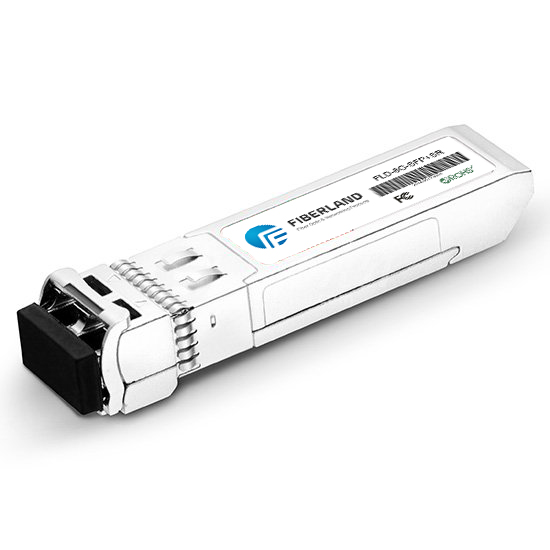What are the differences between switch and router?
2017-08-27
In daily life, the Internet often uses switches and routers. Many people only know that they are the devices used to connect to the Internet, but little is known about their differences and functions. In the spirit of science and learning, Fiberland sorts out some of the content to share with you.

The differences between switch and router:
◆ The router can assign IP to your LAN automatically. Virtual dialing, like a traffic policeman who directs your computer where to go.
Switches are used to distribute network data only.
◆ The router can assign a IP to many hosts, which display only one IP externally.
The switch can connect many hosts, each of these hosts has its own IP.
◆ The switches operate in the relay layer and the switches are addressed according to the MAC address.
The router works at the network layer and is addressed according to the IP address. Routers can handle TCP/IP protocols, while switches cannot.
◆ The router provides a firewall service, switch cannot provide this function. Routers only forward data packets for specific address, transfer of data packets that do not support routing protocols and transfer of unknown target network packets are not delivered, thus preventing broadcast storm.
◆ For example, a router is equivalent to a small post office, just one address (IP), responsible for sending and receiving for one place (personal computer, some server, so you need it on your home network). The switch is the big postal center in the province, responsible for contacting each small place by one address.
Simply router is in charge of network, switch is just deliver. Routing means finding the way for you to surf the Internet. The switch is only responsible for opening the door. You can't get on the internet if there is no routing on the switch.
The above is the relevant content about the difference between switches and routers, hope they are helpful for you!
XFP module,XFP transceiver,bidi sfp,SFP+ module,SFP+ transceiver Which is good? First choice Fiberland!Thanks for your concern, to learn more about Fiberland, please enter Fiberland website: http://www.fiberlandtec.com/

The differences between switch and router:
◆ The router can assign IP to your LAN automatically. Virtual dialing, like a traffic policeman who directs your computer where to go.
Switches are used to distribute network data only.
◆ The router can assign a IP to many hosts, which display only one IP externally.
The switch can connect many hosts, each of these hosts has its own IP.
◆ The switches operate in the relay layer and the switches are addressed according to the MAC address.
The router works at the network layer and is addressed according to the IP address. Routers can handle TCP/IP protocols, while switches cannot.
◆ The router provides a firewall service, switch cannot provide this function. Routers only forward data packets for specific address, transfer of data packets that do not support routing protocols and transfer of unknown target network packets are not delivered, thus preventing broadcast storm.
◆ For example, a router is equivalent to a small post office, just one address (IP), responsible for sending and receiving for one place (personal computer, some server, so you need it on your home network). The switch is the big postal center in the province, responsible for contacting each small place by one address.
Simply router is in charge of network, switch is just deliver. Routing means finding the way for you to surf the Internet. The switch is only responsible for opening the door. You can't get on the internet if there is no routing on the switch.
The above is the relevant content about the difference between switches and routers, hope they are helpful for you!
XFP module,XFP transceiver,bidi sfp,SFP+ module,SFP+ transceiver Which is good? First choice Fiberland!Thanks for your concern, to learn more about Fiberland, please enter Fiberland website: http://www.fiberlandtec.com/
RECENT BLOG POST
-
012019-10With the continuous development of 5G communication technology, 100G modules are gradually becoming popular. We know that there are many kinds of packages for 100G optical modules. From 2000 to now, the optical module package types have been rapidly developed. Its main package types are: GBIC, SFP, XENPAK, SNAP12, X2, XFP, SFP+, QSFP/QSFP+, CFP, CXP. In the fast-developing network era, some 100G optical modules avoid the risk of being eliminated, and upgraded and revised with the wave of the Internet, such as 100G CFP optical modules.
-
012019-101. What is the CWDM SFP? The CWDM optical module is an optical module using CWDM technology to implement the connection between the existing network device and the CWDM multiplexer/demultiplexer. When used with a CWDM multiplexer/demultiplexer, CWDM optical modules can increase network capacity by transmitting multiple data channels with separate optical wavelengths (1270 nm to 1610 nm) on the same single fiber.
-
012019-10AOC is the abbreviation of Active Optical Cables, which is called Active Optical Cables in Chinese. AOC active optical is to encapsulate two optical modules and cable together. Because the medium of transmission in the middle is optical cable, AOC optical module, which contains laser devices, has a higher price for DAC. However, its optical aperture is not exposed, it has high reliability, and its working distance can be customized for a long distance of less than 100 meters.
-
012019-10Dense Wavelength Division Multiplexing (DWDM) technology is capable of transmitting data in an optical fiber using bit wavelength parallel transmission or string line transmission using the wavelength of the laser.It is widely used in different fields of communication networks, including long-distance backbone networks, metropolitan area networks (MANs), residential access networks, and local area networks (LANs).The DWDM optical module is the optical module that uses this technology, so the DWDM optical module has high bandwidth and long-distance transmission characteristics.












